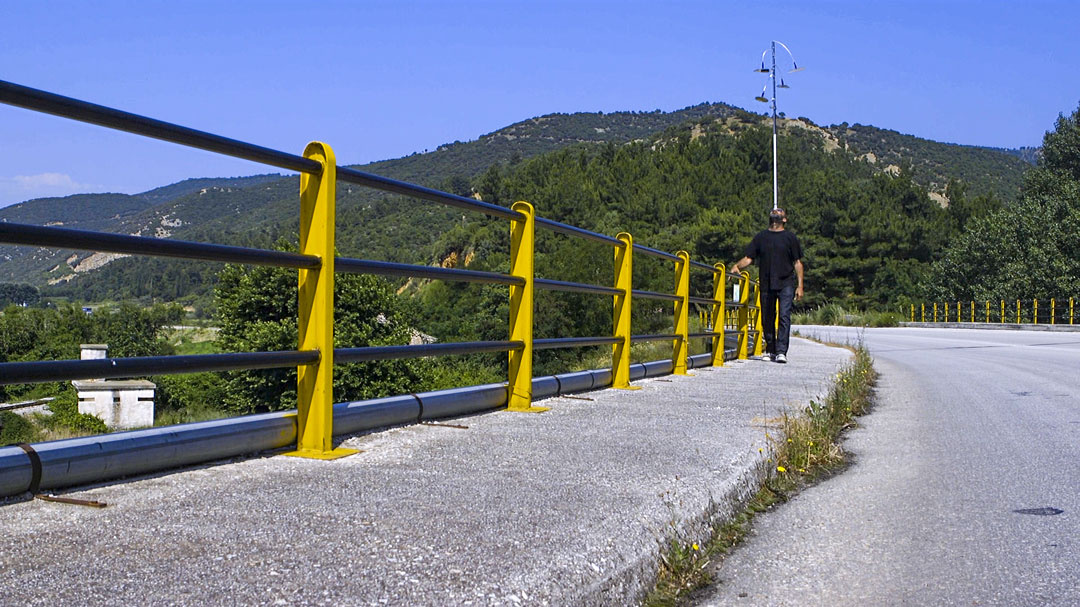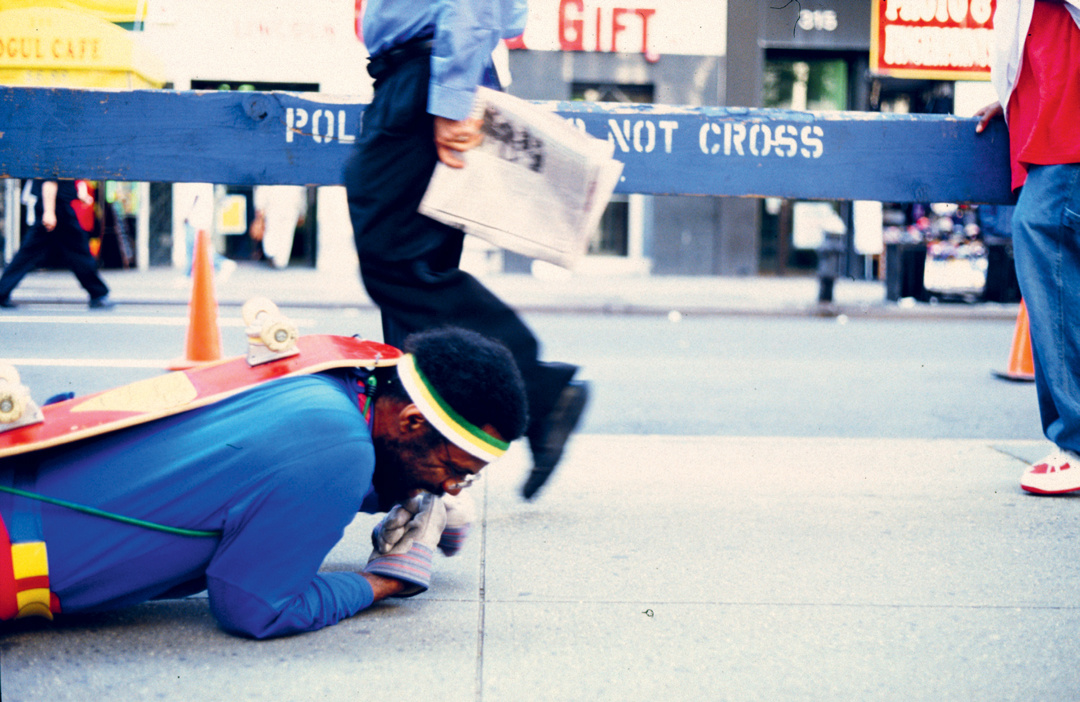One of our most elemental behaviors as human beings—like eating, sleeping, and breathing, is walking. It’s an amateur activity. But what happens when we become explicit, inquisitive, and deliberate about what is as natural to us as eating and breathing? Walking is both universal and idiosyncratic; we all walk but choose different paths, peppered by unique interactions and experiences. As Rebecca Solnit says, “walking is a mode of making the world as well as being in it.”1 This project examines the variety of ways in which artists reflect on this specific, mundane activity, and use it to make meaning.
Opening November 2, 2018 and on view until March 10, 2019, Other Walks, Other Lines considers what walking means in a contemporary context, touching upon topics such as urban planning, immigration, and the dérive.
Organized by the San José Museum of Art, and curated by Lauren Schell Dickens, curator; Rory Padeken, associate curator; and Kathryn Wade, curatorial associate, Other Walks, Other Lines focuses on artwork made during the last thirty years by artists around the world who use walking as a mode of making the world, as well as being in it. The exhibition is divided into six sections: Meaning of Ordinariness; Pilgrimage and Psychogeography; A Body Measured Against the Earth: Immigration and Land Wars; Access/Ability; Street Life: Processions and Protests; and Other Walks: Gabriel Orozco. In conjunction with the exhibition, performances will activate the gallery and take the exhibition outside of SJMA’s building. Choreographer and artist Brendan Fernandes addresses the borders that are constructed within a museum’s walls. In his commissioned work Inaction, Fernandes choreographed the movements of dancers to explore boundaries and thresholds within SJMA’s building. Lara Schnitger’s Suffragette City—a participatory procession and protest—extends the exhibition's focus on artists using street demonstrations as another form of public art.
Artists included are Yuji Agematsu, Francis Alÿs, Ginny Bishton, Jennifer Allora and Guillermo Calzadilla, Brendan Fernandes, Ana Teresa Fernandéz, Regina José Galindo, Hiwa K, Brad Kahlhamer, Glenn Kaino, Suki Seokyeong Kang, Kimsooja, Pope.L, Omar Mismar, Paulo Nazareth, Gabriel Orozco, Wilfredo Prieto, Lordy Rodriguez, Michal Rovner, Lara Schnitger, Clarissa Tossin, and Charwei Tsai.
The exhibition is part of the cross-disciplinary collaboration, New Terrains: Mobility and Migration, presented in collaboration with community partners including Art Ark Gallery; Art Object Gallery; Cantor Arts Center at Stanford University; Chamber Music Silicon Valley; Children’s Discovery Museum; Chopsticks Alley Art; City Lights Theater Company; College of Adaptive Arts; Consulado General de México en San José; the de Saisset Museum, Santa Clara University; FWD.us/Welcome.us/ genArts Silicon Valley; History San José; ICA/San Jose Institute of Contemporary Art; MACLA/Movimiento de Arte y Cultura Latino Americana; Montalvo Arts Center; New Museum of Los Gatos; Pajaro Valley Arts; Palo Alto Art Center; Research Center for the Americas/UC Santa Cruz; Sangram Arts; San Jose Jazz; San Jose Museum of Quilts & Textiles; San José Public Library; Santa Cruz Museum of Art and History; SETI Institute; Soul Focus Sports; South Bay Clean Creeks Coalition; Teatro Vision; The Tech Museum of Innovation; Institute of the Arts and Sciences, UC Santa Cruz Arts Division and the Arboretum at UCSC; Walk San Jose; Works/San José; Yu-Ai Kai Senior Community Center; and ZERO1.
Other Walks, Other Lines is sponsored by Applied Materials Foundation and Melanie and Peter Cross. In-kind support for equipment is provided by BrightSign. Supported, in part, by a Cultural Affairs grant from the City of San José.
Visit newterrains.org for more information and partner programming.
Other Walks, Other Lines - The Reading List
Press
San Jose Museum of Art’s new exhibition is worth the walk, San Jose Mercury NewsNovember 3, 2018
San Jose Museum Takes a Walk, Metro Silicon Valley (Metroactive)
November 14, 2018
San Jose Museum of Art Brings New Perspectives to Walking with Other Walks, Other Lines, SFGate
November 20, 2018
'Suffragette City' Delivers A Feminist Call to Arms in Downtown San Jose, KQED Arts
January 12, 2019
Walking in 2018, Burlington Magazine (Burlington Contemporary)
January 31, 2019
Want a Feminist Art/Activism Procession in Your Town?, Philanthropy Women
February 1, 2019
Movement at the Museum, Mercury News
February 20, 2019
Walking in 2018, Burlington Contemporary
January 31, 2019



